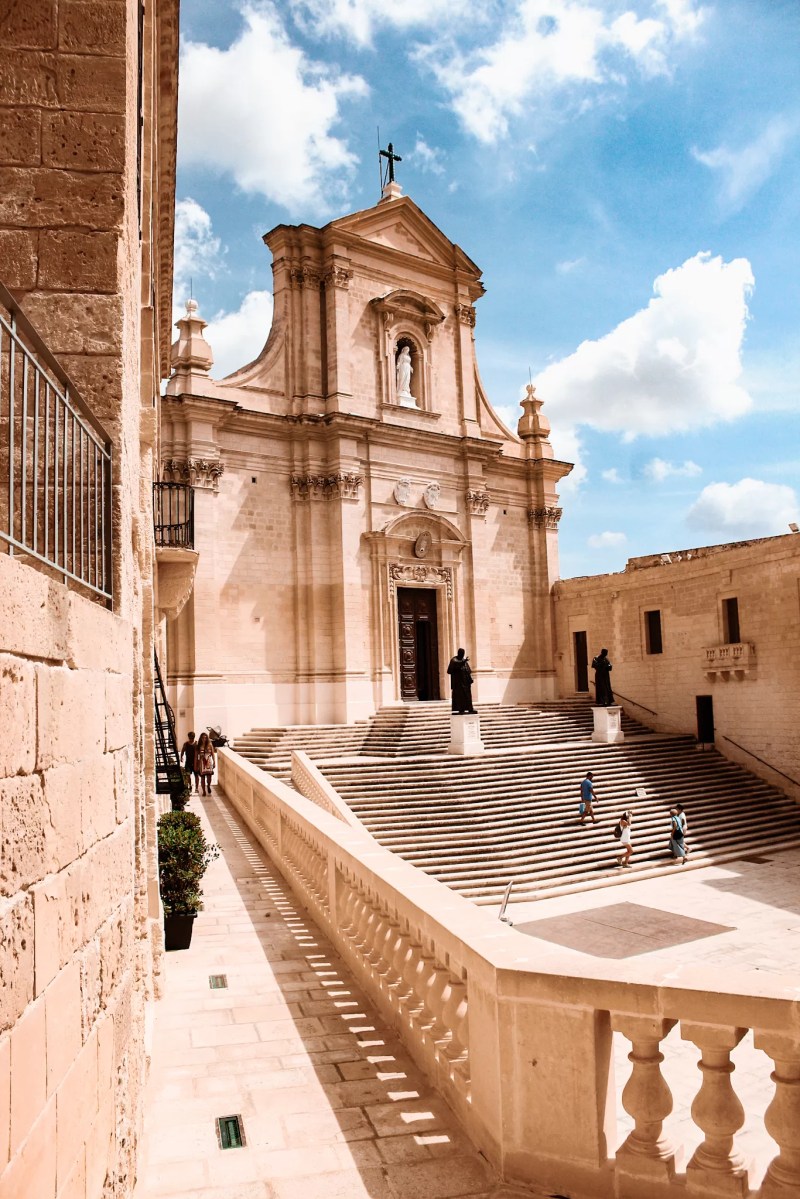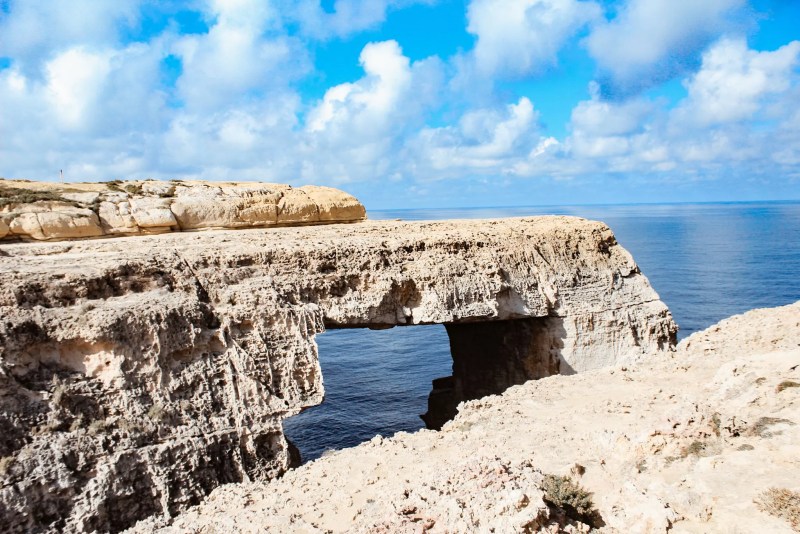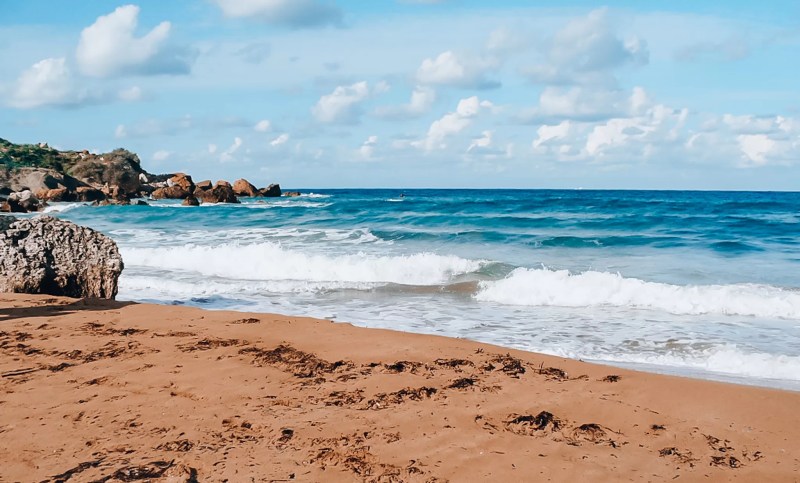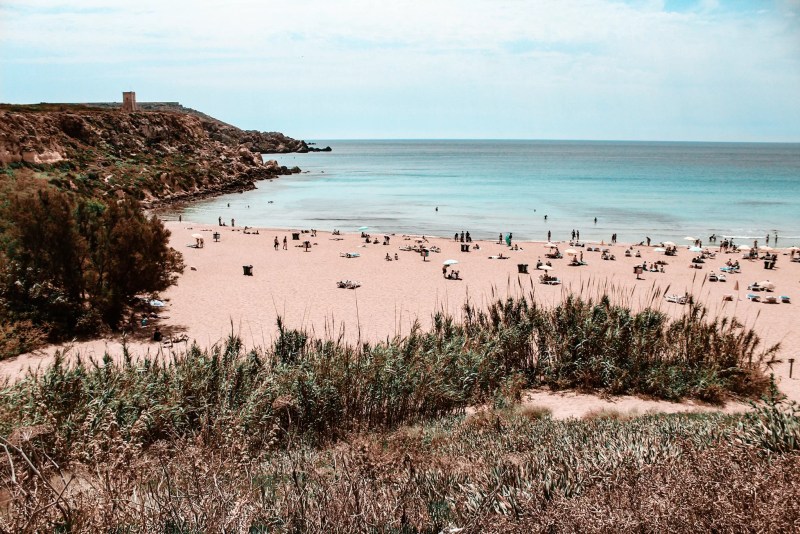Is one week too long in Malta? No, not at all.
In fact, one week in Malta might not be enough to see everything.
This Mediterranean island is packed with historical attractions and natural wonders. And of course, you’ll want to carve out time for a nice long swim in one of Malta’s beautiful beaches.
I’ve put together a one week in Malta itinerary to help you make the most of your stay. I also share my tips for getting around the island, and where to stay in Malta for a week.
So, let’s dive right in!

Table of Contents
Getting around Malta
The best way to get around Malta is by car. However, you should know that traffic is a big problem on the island, and you might struggle to find parking at popular attractions.
But driving in Malta enables you to explore the country at your own pace. Plus, some places are difficult to get to by bus.
Renting a car for a week in Malta can be more affordable than using ride-hailing services. And if you’re visiting during the off-peak season (October – March), you should be able to get some decent rates.
Where to stay in Malta for a week
If you’re visiting Malta for a week, you’ll want to stay somewhere central or lively.
Valletta is a good option, but you’ll mainly find boutique hotels and luxury accommodation.
Alternatively, you might consider staying in a tourist resort like St. Paul’s Bay. You’ll find a lot of accommodation options here, including budget-friendly hotels and guesthouses.
If you want to spoil yourself, or you’re planning a romantic getaway, I recommend staying in a traditional town like Birgu or Rabat.
For example, Palazzo Bettina in Birgu offer a unique experience in a beautifully restored 17th-century palace.


This boutique hotel has a rooftop pool and jacuzzi, where you can enjoy stunning views of the marina and neighbouring Isla.
One week in Malta (a 7-day itinerary)
Now, let’s look at how to spend one week in Malta. I’ve put together a 7-day itinerary that includes the island’s main highlights.
Note that this itinerary allows for some flexibility. For example, while I dedicated a full day to Valletta, you can actually fit in another place or activity (although I don’t recommend it).
Also, you can visit Gozo on any day of the week. However, it’s best to go on a weekday as it can get very busy during the weekend (especially in summer).
So, feel free to move things around and adapt this itinerary to your needs and preferences.
And if you’d like to go beyond this itinerary and see more of the island, you can check out this list of 35 best things to do in Malta and Gozo.
Day 1: Valletta
Let’s start with the capital – Valletta.
As you may already know, the entire city is a UNESCO World Heritage Site. This alone proves that there’s a lot to see and do in Valletta, which is why I recommend spending a full day here.

You’ll want to head to Valletta early in the morning, to beat the crowds and the heat.
Start the day with a coffee at Caffe Cordina (one of the oldest cafes in Europe) or Lot 61 (they make amazing coffee!), then hit the museums.
Must-see attractions in Valletta include:
- The Museum of Archaeology
- St. John’s Co-Cathedral and Museum
- The Grandmaster’s Palace
- Manoel Theatre
- Fort St. Elmo and the National War Museum
- The Upper and Lower Barrakka Gardens

For lunch, you can head to one of the restaurants on the Valletta Waterfront. Here, you can enjoy a nice meal with views of the Grand Harbour.
I also recommend spending an evening in Valletta. There are a lot of wine bars in the city, and you might even be able to attend a cultural event.


Day 2: Mdina, Rabat & Dingli
Next on this one week in Malta itinerary is Mdina – the island’s star attraction.
This medieval citadel sits high on a hill, and harbours many beautiful palaces and churches within its walls.

These include St. Paul’s Cathedral, Casa Gourgion, Palazzo Falson, and St. Agatha’s Chapel.
You can easily spend an entire morning in Mdina, wandering through the winding alleys and enjoying the views from the ramparts.


Then, you can walk to neighbouring Rabat – a traditional town that hosts some of the most ancient sites in Malta.
These include the Roman Villa, St. Paul’s Catacombs, St. Cataldus Chapel and Catacomb, and St. Agatha’s Crypt.

You can have lunch on the bustling Rabat square, or grab a couple of pastizzi from the popular Serkin cafe.
If you’re up for it, you can drive to nearby Dingli for a lovely walk along the cliffs.


Dingli Cliffs are the highest point in Malta, and offer panoramic views of the Mediterranean Sea. You can even see the tiny, uninhabited island of Filfla from here.
Day 3: The Temples & Blue Grotto
You’ll likely be surprised to learn that Malta is home to some of the oldest standing structures in the world.
The Megalithic temples of Malta are UNESCO World Heritage Sites, and were built between 3600 BC and 2500 BC.


The Hagar Qim and Mnajdra Archaeological Park is the most popular temple complex on the island. You can walk around the temples at your own leisure, or take a guided tour.
The museum at the site offers an insight into the first human settlements on the island. For example, statuettes of a female figure found on site suggest that this community worshipped a goddess.
From here, you can head down to the Blue Grotto. This is a complex of sea caves which you can explore on a boat trip or kayak tour.
Day 4: The Three Cities
Still asking yourself: is one week too long in Malta? Well, we’re on day 4 and there are still plenty of places to see, including the Three Cities.
Birgu (Vittoriosa), Isla (Senglea), and Bormla (Cospicua) are three fortified towns on the Grand Harbour, which played a huge role during the Great Siege of 1565 and the Second World War.

Start the day in Birgu. You can visit the Inquisitor’s Palace, Fort St. Angelo, the Sicolo-Norman House, and the Maritime Museum.


You can then walk along the waterfront and cross the bridge to get to Isla. On your way, you might encounter local fishermen and regatta enthusiasts tending to their boats.
If you keep walking along the sea, you’ll come across the iconic Gardjola, watching over the Grand Harbour.

You can climb to the Gardjola Gardens to enjoy stunning views of the harbour, then just stroll through the streets of Isla.
Isla is one of the most densely populated places on the island, with towering townhouses and an impressive basilica all nestled within the fortification walls.


From here, you can make your way back to Birgu. If you fancy a refreshing drink or a hearty lunch, there are plenty of restaurants along the waterfront.
There’s also Cafe Riche, a quaint little cafe that has been around since 1933.
Day 5: Gozo
If you’re visiting Malta for a week, then you’ll have time for a trip to Gozo.
Malta’s sister island is much smaller in size and population, and is mainly rural. However, there are still plenty of things to do in Gozo.
The ferry journey only takes 20 minutes. Once you arrive in Gozo, you can head to Victoria (the capital) for breakfast and the local flea market.

Then, you can walk up to Cittadella, an old fortified city with an impressive Baroque cathedral.


After Victoria, you could visit Ggantija Temples. These are the earliest of the Megalithic temples of Malta – and they’re actually older than the pyramids of Egypt!

If you want to get off the beaten track in Gozo, drive to Wied il-Mielah and hike along the coast.

If you want to go for a swim in Gozo, there’s Ramla Bay with its vast stretch of reddish sand. However, this beach can get quite crowded in summer, so you might prefer to try the lesser-known San Blas Bay.

There’s also Mgarr ix-Xini, a hidden inlet with a small sandy beach and an old watchtower.


You might also decide to have dinner in Gozo before returning to Malta. Many restaurants in places like Xlendi, Marsalforn, and Mgarr specialize in fresh seafood and local dishes.
Day 6: Mellieha, Popeye Village & Golden Bay
After five days of sightseeing, you’ll probably want to unwind and enjoy the sun and sea.
Some of the most beautiful beaches in Malta are found on the north of the island. These include Golden Bay (Ghajn Tuffieha) and Ghadira Bay (Mellieha).

You could also head to Popeye Village, an amusement park that was once the film set of the 1980 film Popeye. There’s a lovely little beach here, too.

If you go to Mellieha, I highly recommend taking a walk around the sanctuary complex in the heart of the village.
The sanctuary is built around a gorgeous courtyard and consists of a church that dates back to the 16th century, with a tunnel that leads to a rock-hewn crypt.

If you’re visiting Malta in winter, you can still head to the beach. The weather may be warm enough for a picnic on the beach, or you might just walk along the coast instead.
Day 7: Marsaxlokk
On the last day of your one week in Malta, you’ll likely want to do something nice and relaxing. I recommend a morning in Marsaxlokk.
The shore of this seaside town is lined with colourful boats and restaurants. You can have lunch here, or just explore the market.

Note that Marsaxlokk hosts a fish market every Sunday, so you may decide to visit this town sooner rather than leaving it for the last day.
Frequently asked questions
Still not sure about spending a week in Malta? Let’s address some of your concerns!
Is it worth going to Malta for a week?
Yes! You need a full week to truly experience Malta.
However, I recommend visiting Malta in October if you want to avoid the crowds and the heat, and still be able to enjoy the beaches.
March and April are also a good time to visit Malta.
Can you see all of Malta in a week?
You can see the highlights, but not the entire island.
One week is enough if you want to visit historical sites like Valletta, Mdina and the Megalithic Temples, take a day trip to Gozo, and spend a day at the beach.
There are a lot of amazing things to do in Malta, and you’ll need more than a week to do them all. But don’t fret – you can always come back!
How expensive is a week in Malta?
This will largely depend on the time of year and your choice of accommodation.
On average, you might spend between €500 – €800 on accommodation if you’re travelling during the off-peak season. In summer, you’ll likely spend over €1,000 for a week in Malta at a 4-star hotel.
Car rental prices will be higher in summer, as well.
Eating out in Malta can be quite pricey, especially in St. Paul’s Bay and Sliema. You’ll likely spend around €10 for a wrap or sandwich, and €15 – €18 for a plate of pasta.
Tickets, tours & day trips
When planning your week in Malta, you’ll want to make sure you book your tickets and tours in advance.
While you may be able to get tickets at the door, purchasing them in advance will help you skip the queues on busy days.
So, here are the links to buying tickets for some of the attractions mentioned in this itinerary, plus recommended tours:
Valletta:
- Casa Rocca Piccola Palace & Museum Entrance Ticket
- The Original Valletta Walking Tour
- Mysterium Fidei Monastery & Secret Garden in Valletta
Mdina
Birgu:
- Three Cities Walking Tour (incl. entrance to Inquisitor’s Palace)
- Fort St. Angelo E-ticket with Audio Tour
Other:



2 Responses
Hi Daniela! Thanks so much for this detailed guide. It’s always nice getting a local’s perspective when planning a trip. I’ll be in Malta at the end of February and plan on visiting Hagar Qim. Is it possible to walk between Hagar Qim and the Blue Grotto? And do you know if a bus runs from the Blue Grotto back to Valetta? I won’t be renting a car (can’t drive!) so I’ll be relying on taxis and public transportation. Thanks in advance!
Hi Claire,
You’re welcome – I hope you found it useful 🙂
Yes, you can walk from Hagar Qim to Blue Grotto – there’s a lovely promenade and you get some amazing views of the cliffside and the open sea.
However, if you want to take a boat ride, you’ll need to walk down a very steep hill to the little harbour. There are some cafes and restaurants there, as well.
You can get almost anywhere from Valletta. I think you’ll need to get on bus 74 to get to Hagar Qim and Blue Grotto, but it’s best to double-check when you’re there 🙂